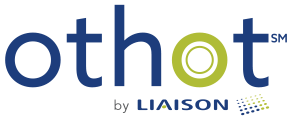
Improve Your Student Retention by Three Percent
How do you define student success? Do you know what factors influence individual students throughout their academic journeys? What changes can you make to increase retention, support persistence and ensure graduation? Othot can help.
Colleges and universities with high rates of retention and persistence use Othot’s advanced analytics platform to understand their students better and make informed decisions. And it’s working. They’re seeing a three percent increase in retention. You can too.
WHAT IS STUDENT SUCCESS?
Every campus defines student success differently. That’s why our proven AI-driven Student Success models are customized to your specific needs and prescribe the right actions at the right time. These are not the “one size fits all” models that you are used to receiving from other providers. With our advanced analytics software you will:
- Understand individual students’ behavior; anticipate problems before they arise
- Isolate gaps in programs or policies, term-over-term and year-over-year, to increase retention and persistence
- Pinpoint specific variables, such as financial aid incentives and advisor programs, to influence and increase student success in the aggregate and on an individual student level
- Make informed decisions and track towards progress consistently and confidently

Custom Modeling
Leverage data science expertise using your existing data to provide unique insights and information in real-time for each student. This tailored model provides insightful predictions and prescriptions for you to improve your student success efforts.

Real-time Predictive Dashboard
Visualize the future impact of your decisions quickly and in real time. Total persistence and retention predictions are updated each time new data is provided, including the ability to track how close your institution is to reaching critical goals.

What-if Analyses
Determine which actions will have the greatest influence on an individual’s likelihood to retain, persist, and graduate. Othot’s prescriptive analytics are delivered quickly and enable you to simulate strategies and actions that require valuable resources, to ensure your institution is making the most informed decisions possible.

Individual Student Views
View predictions at the individual student level and identify what is influencing his or her likelihood to persist. This in-depth review helps to identify strategies to support at-risk individuals and mitigate problems before they arise.

Comprehensive Data Sets
Leverage machine-learning models that offer the most precise predictions for your data set by augmenting academic data with any other unique factors you deem critical for retention, such as behavioral and socioeconomic variables.
Othot’s approach analyzes four times more input with less error than most regression-based models
PARTNER SUCCESS

"Othot’s platform... gives us all a better sense of where we’re going with our students, and how we can make sure they’re retained and graduate."

Chris Kitas
Indiana University of Pennsylvania’s Associate Director for Institutional Research, Planning and Assessment

"The residual impact of using the Othot Platform is that our retention rates went up. That’s confirmation that we’re recruiting students that will be successful at Texas Tech."

Jason Hale
Texas Tech University's Executive Director of Undergraduate Admissions
FREQUENTLY ASKED QUESTIONS
Othot’s platform was created to take the cost and complexity out of predictive analytics. Our models are built from scratch for each customer to identify which students are most likely to persist and which interventions are predicted to increase the probability of graduation. We build and deliver our models quickly, so you’re up and running in weeks, not years.
Typically, we onboard customers in 60 to 120 days. We work with our customers to create a timeline that fits their needs.
No, our models are customized for each institution. The first step in our process is to identify the “High Impact Questions” (HIQs) that matter most for your school, such as, “What is the likelihood that a student will enroll?” Then our team creates a machine learning model built around answering that question. Othot’s predictive engines also combine a school’s historical data with external data and can be customized to create predictions for a school’s unique “What-If” scenarios, such as specific campus visit types or scholarships.
This proprietary approach produces predictive intelligence that offers a more comprehensive solution than other analytic programs.
We recommend that you have two to three years of historical data student data to build a model. In addition, we also source external data to build your models. External data includes demographic, socio-economic, geographic, environmental and behavioral.
We release updates to our software several times a year and schedule the updates to minimize disruptions to our customers. We communicate with our customers often about the new releases and provide detailed instructions and notes on all new features in the platform.



